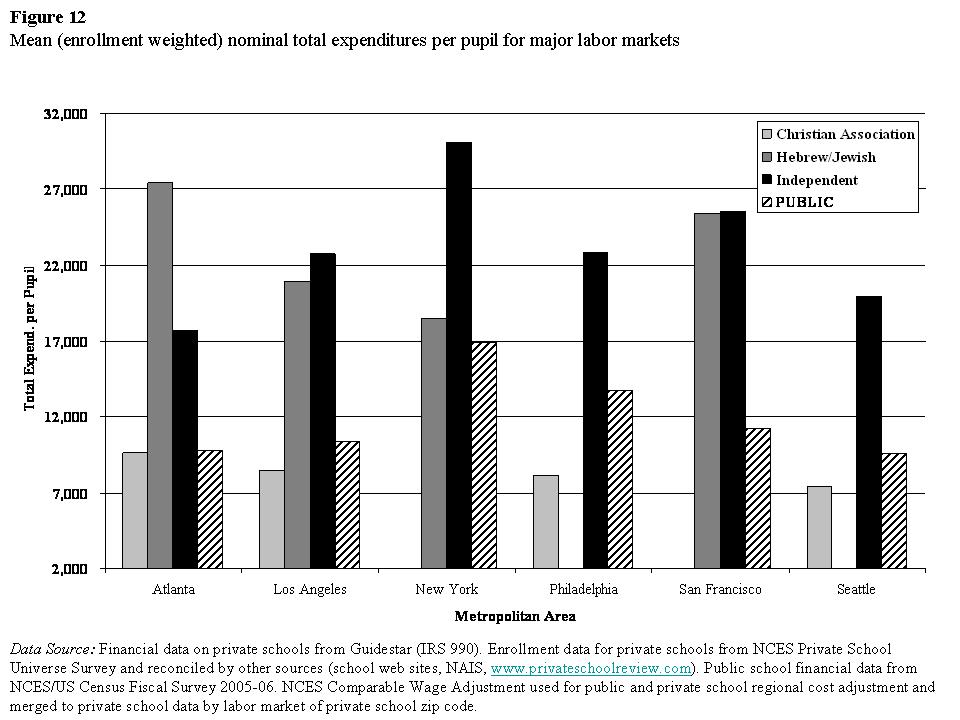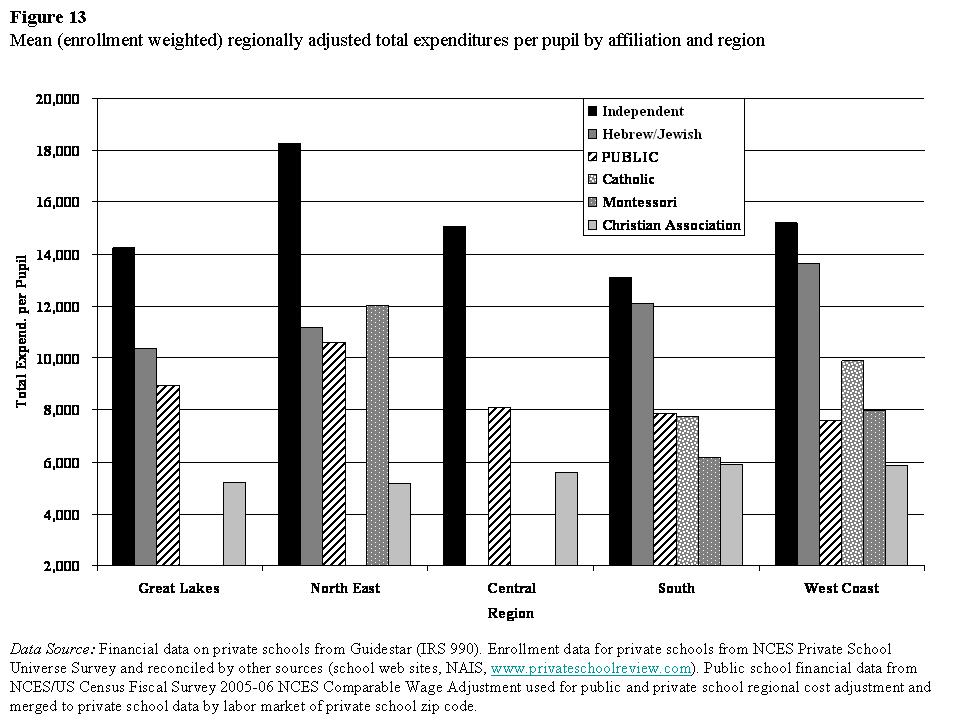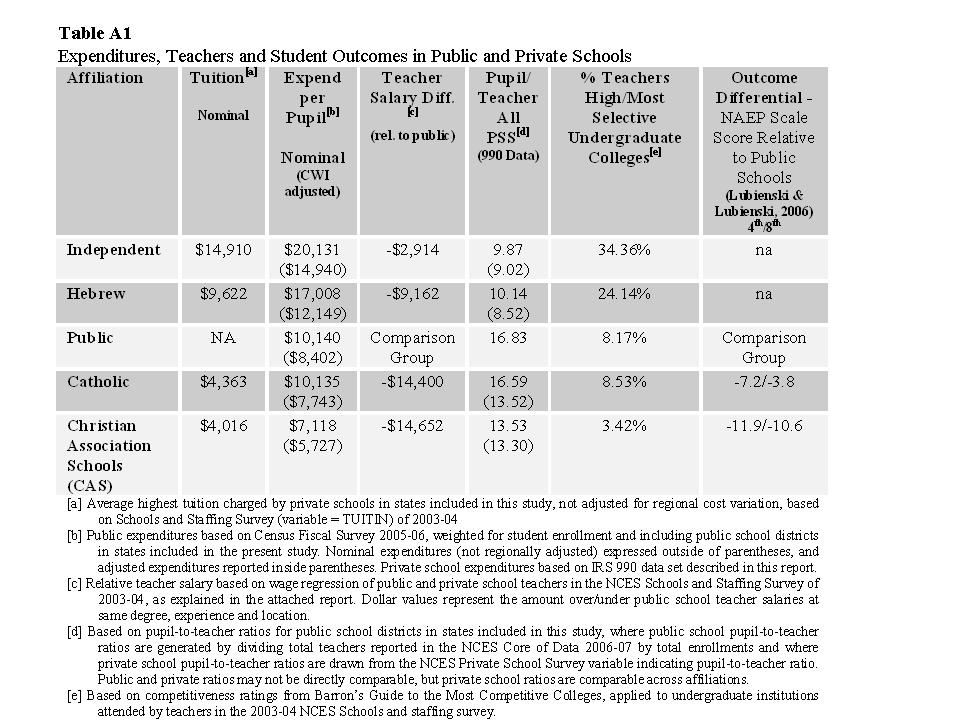Last summer, I had an interesting exchange with Andrew Coulson regarding the issue of private school costs. That discussion can be found here: https://schoolfinance101.wordpress.com/category/private-school-costs/
I had the displeasure this evening, while channel surfing, to catch a few minutes of John Stossel’s latest episode on the failures of the public education system and low-cost wonders of private education markets. Here’s a link that summarizes some of the content of Stossel’s latest: http://www.washingtonexaminer.com/opinion/columns/John-Stossel–84692012.html
I happen to be a strong supporter and admirer of private schools, having worked as a middle school science teacher for years in one of NYC’s elite private independent day schools. In my ideal world, I would provide every child the opportunity to attend such a school. And that would be an expensive proposition!
I’ve realized over time, having studied teacher characteristics and finances of various types of private and public schools, that what you get on the private marketplace for education is simply a wider range than what you get in the more regulated public system. That just makes sense. Less regulation broadens the range of options – at both ends.
Private schools do not, by any stretch of the imagination, spend uniformly less than public schools per child. In fact, private independent day schools (a non-trivial segment of the private school marketplace) typically spend much more per pupil than public school districts operating in the same labor market. The school in NYC where I used to work continues to charge in tuition alone, nearly double the average expenditure (operating expense per pupil) of NYC public schools. Further, it is especially important to understand that private school tuition covers only a portion of actual cost.
How can this happen on the open marketplace for education? Shouldn’t market competition drive these prices into line – bring them down well below public bureaucracy spending on education – and still yield better quality? Or, perhaps the tuition these schools charge and amount they spend to operate actually represent the competitive price of providing the excellent education many parents demand. Perhaps better quality (hard to compare), but at a higher, not lower cost!
Quite simply, when it comes to public or private education, you get what you pay for. Many private schools spend far more than the public schools in the same labor market – many spend roughly the same and some do spend less. And the quality of that schooling varies accordingly. I document this thoroughly in this lengthy report: http://www.greatlakescenter.org/docs/Policy_Briefs/Baker_PvtFinance.pdf
Here are a few highlight figures from the report:
Finally, and perhaps most interesting:
The punchline here is, as I’ve said above – You get what you pay for. And on the private marketplace for education, high quality comes at high cost – much higher than the average public school cost.
- Private independent day schools which provide small class sizes with highly academically qualified teachers spend well above nearby public schools.
- Catholic schools, where they report their finances (not the crude survey summary data of tuition and expense compiled annually by the National Catholic Education Association) spend marginally less than nearby public schools (but charge much lower tuition than cost), perform about the same if given the same kids and have comparably qualified teachers in terms of academic preparation. Note that Catholic schools in trying to operate on a shoestring have been financially failing at an alarming rate. That is how markets work when you try to hard to price your product below the cost of maintaining quality (a more friendly spin being that the social service mission of urban Catholic schools has outpaced church philanthropy). I discuss this extensively in the report.
- Conservative Christian schools (to the extent they can be lumped together) operate at much less per pupil than traditional public schools and have lower outcomes given the same students and have disturbingly academically weak teaching staff based on national survey data.
Again, you get what you pay for. The open market place for private schooling is simply more diverse than the more regulated public marketplace, on price to consumers, average overall spending and ultimately on quality.
It is entirely inappropriate to argue that the public would be better served by wholesale shifting of current public school students into only those private schools which presently do spend less than the public schools. It is particularly twisted to suggest that for the price of Conservative Christian or Catholic education, we can provide kids with the equivalent of private independent school education. While pundits like Stossel or Coulson may not make this claim in this particular form, they imply as much by lumping all of these schools together as “private” and proclaiming that “private schools simply do more with less.” The reality – Some do more with more. Some do less with less. And yes, there are exceptions that do more with less, and less with more – just as in any analysis which involves thousands of points.



3 thoughts on “Stossel & Coulson Misinformation on Private vs. Public School “Costs””
Comments are closed.